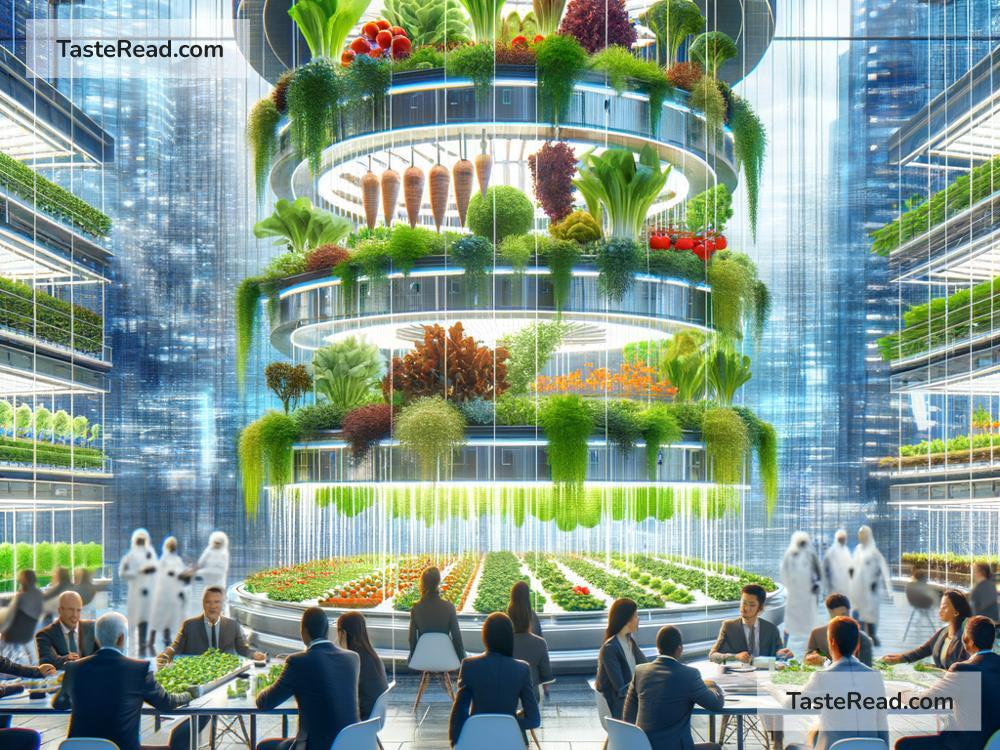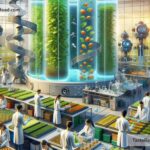The Future of Food: How Cross-Sector Partnerships Can Change the Way We Eat
Food is something we all rely on to survive, but the way we grow, produce, and access food is changing. As the global population continues to grow—expected to reach nearly 10 billion by 2050—we must rethink the future of food. Challenges like climate change, resource shortages, and food insecurity mean that it’s time for fresh ideas. One solution that’s gaining attention is cross-sector partnerships: collaboration between governments, businesses, scientists, farmers, and communities to tackle today’s food challenges.
In this blog, we’ll explore the future of food and how partnerships across industries can help create healthier, more sustainable, and more accessible food systems.
The Growing Food Crisis
Feeding the world is getting harder. On the one hand, demand for food is increasing due to population growth. On the other hand, resources like land, water, and energy are becoming scarcer. At the same time, climate change is making food production less predictable. Droughts, floods, and rising temperatures are causing crops to fail and are affecting farmers everywhere.
In addition, traditional methods of growing and distributing food are not always sustainable. For example, industrial farming often leads to soil depletion, water pollution, and greenhouse gas emissions. Meanwhile, millions of people around the world still don’t have enough to eat, while others are consuming unhealthy diets filled with processed and junk food.
These challenges make it clear that the future of food can’t rely on the same old methods. We need new ideas and shared action—this is where cross-sector partnerships come in.
What Are Cross-Sector Partnerships?
Cross-sector partnerships are simply collaborations between different groups, including governments, corporations, nonprofits, academic institutions, and local communities. Each group brings unique expertise and resources to the table. For example:
- Scientists can develop innovative solutions, like lab-grown meat or drought-resistant crops.
- Corporations can fund research and create scalable business models.
- Governments can help with regulation, infrastructure, and policies that support sustainable practices.
- Farmers and local communities can provide firsthand knowledge of conditions on the ground.
When different sectors work together, they combine their strengths to solve problems faster and smarter than one group could on its own.
Innovations in Food Technology
One area where cross-sector partnerships are making a big impact is food technology. Advances in science and engineering are transforming the way we produce food, and collaboration is critical to scaling these innovations.
For example, partnerships between biotech companies and researchers have led to groundbreaking developments, like plant-based proteins (e.g., Beyond Meat and Impossible Foods) and lab-grown meat. These alternatives use fewer resources and produce fewer emissions compared to traditional livestock farming. Several startups are now working with investors and food corporations to bring these revolutionary products to grocery stores and restaurant menus worldwide.
Another example is vertical farming, which uses indoor spaces and stacked layers to grow food with less land and water. Companies, governments, and agricultural experts are working together to make vertical farming more affordable and widespread. As a result, cities could become hubs for growing fresh produce, even in areas with limited farmland.
Tackling Food Waste and Inequality
Cross-sector partnerships are also tackling two major issues: food waste and food inequality. Around one-third of the world’s food is wasted every year. This happens for many reasons, like overproduction, inefficient transportation, or expired products in stores. At the same time, billions of people still don’t get enough nutritious food.
Partnerships between governments, nonprofits, and businesses are addressing these issues. For example, some organizations are developing apps and platforms where grocery stores, restaurants, and farmers can donate surplus food to people in need. Governments are also introducing policies that incentivize companies to reduce waste and find creative solutions.
Technology companies are joining the fight as well. Artificial intelligence (AI) is being used to predict food demand and help businesses avoid overproduction. Drones and blockchain technology are being explored to improve supply chains and ensure that food reaches the people who need it most.
Building Resilient Communities
The future of food isn’t just about producing enough—it’s also about creating systems that can adapt to future challenges. Cross-sector partnerships can help communities become more resilient by promoting local food systems, sustainable farming practices, and education.
For example, nonprofits working with local farmers can provide training in eco-friendly techniques, like crop rotation and organic farming. Governments can offer subsidies to encourage sustainable practices. Schools and community groups can educate the next generation about healthy eating and how food is grown.
Some partnerships go even further by helping communities prepare for climate-related challenges. For instance, groups are working together to develop heat- and drought-resistant crops that can withstand extreme weather conditions, ensuring farmers can continue growing food despite environmental changes.
Everyone Has a Role to Play
The future of food depends on all of us—from big corporations to local communities to individual consumers. Cross-sector partnerships are a powerful way to bring everyone together to address complex food challenges. By combining innovation, resources, and knowledge, we have the ability to create a food system that is sustainable, accessible, and resilient.
As consumers, we can also play our part by supporting sustainable brands, reducing food waste in our own homes, and advocating for policies that promote food equity.
The future of food is not just about survival—it’s about thriving. Together, we can build a world where everyone has access to nutritious, sustainable, and delicious food for generations to come.


